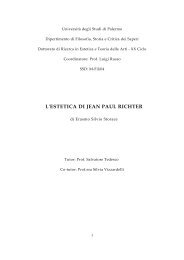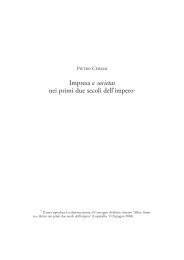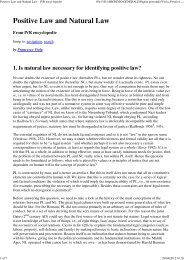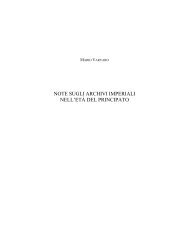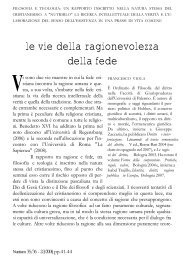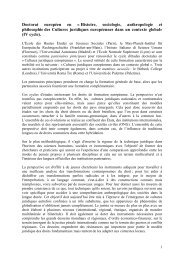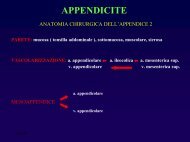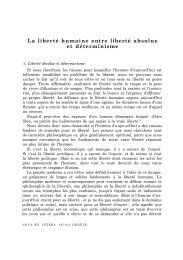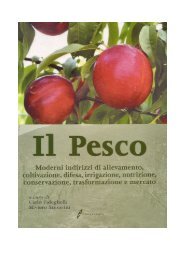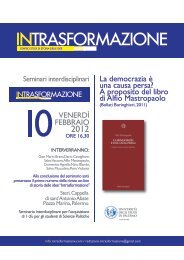F. TERRANOVA, Osservazioni su Gai 2.108 pp. 281 - Università di ...
F. TERRANOVA, Osservazioni su Gai 2.108 pp. 281 - Università di ...
F. TERRANOVA, Osservazioni su Gai 2.108 pp. 281 - Università di ...
You also want an ePaper? Increase the reach of your titles
YUMPU automatically turns print PDFs into web optimized ePapers that Google loves.
statore (c.d. mancipio dans), sebbene allo scopo <strong>di</strong> consentire a un soggetto<br />
<strong>di</strong> fare testamento (così <strong>Gai</strong> 2.105: testamenti or<strong>di</strong>nan<strong>di</strong> gratia). 23<br />
Nel t.p.a.e.l. <strong>di</strong> età evoluta, il familiae emptor continua a mantenere,<br />
propter ueteris iuris imitationem, il <strong>su</strong>o ruolo <strong>di</strong> pars dell’atto anche dopo<br />
l’introduzione nello stesso dell’here<strong>di</strong>s institutio. Il t.p.a.e.l. conserva,<br />
quin<strong>di</strong>, la <strong>su</strong>a originaria struttura bilaterale che gli deriva dal nascere come<br />
impiego della mancipatio, sebbene nella sostanza si incominci a delineare<br />
l’idea, 24 giunta fino ai nostri giorni, secondo cui il testamento è essenzialmente<br />
«un atto unilaterale, mortis causa, personalissimo, revocabile<br />
sino all’ultimo istante <strong>di</strong> vita, un atto con il quale un soggetto – il testatore<br />
– <strong>di</strong>sponeva delle <strong>su</strong>e sostanze per il tempo dopo la <strong>su</strong>a morte». 25<br />
Alla luce delle considerazioni svolte, si comprendono le ragioni<br />
per cui i soggetti elencati in <strong>Gai</strong> 2.105-106 e Tit. Ulp. 20.3-5 non possano<br />
fungere da testimoni, ragioni dalle quali <strong>di</strong>scende il principio ‘reprobatum<br />
est in ea re domesticum testimonium’. 26 Le stesse, come <strong>su</strong>bito<br />
si vedrà, variano a seconda che si tratti dei soggetti sottoposti a una<br />
delle parti del negotium, del pater o del frater, che si trova in eadem potestate,<br />
del familiae emptor.<br />
23 «È indubitabile, quin<strong>di</strong>, che nel pensiero gaiano anche me<strong>di</strong>ante la mancipatio familiae<br />
si ha il fenomeno per cui – tanto per servirci dello stesso linguaggio gaiano – here<strong>di</strong>tas<br />
nobis obvenit». Così B. ALBANESE, La <strong>su</strong>ccessione ere<strong>di</strong>taria in <strong>di</strong>ritto romano antico, in<br />
AUPA 20 (1949), 419.<br />
24 Verosimilmente proprio in ragione dell’introduzione nel t.p.a.e.l. dell’here<strong>di</strong>s institutio.<br />
Cfr. <strong>Gai</strong> 2.103, il cui testo è riportato infra, ai §§ 5 e 5.1. V. anche <strong>su</strong>pra, nt. 7.<br />
25 Così M. MARRONE, Istituzioni <strong>di</strong> <strong>di</strong>ritto romano 3 , cit., 609. V. in argomento anche<br />
M. AMELOTTI, s.v. Testamento (<strong>di</strong>r. rom.), in ED 44 (Milano, 1992), 459 s. Incidentalmente<br />
va rilevato che, in letteratura, si tende <strong>di</strong> solito a negare che la c.d. mancipatio familiae<br />
abbia natura testamentaria <strong>su</strong>lla base <strong>di</strong> due fondamentali caratteristiche della stessa:<br />
la mancanza dell’here<strong>di</strong>s institutio e la struttura bilaterale dell’atto. Cfr. G. SCHERILLO,<br />
Corso <strong>di</strong> <strong>di</strong>ritto romano. Il testamento, I, Milano 1966, 260 ss. In argomento v., per tutti,<br />
H. LÉVY-BRUHL, Nature de la Mancipatio Familiae, cit., 253 ss. Tuttavia, non è affatto <strong>di</strong>mostrato<br />
che la nozione <strong>di</strong> testamento, più <strong>su</strong> riportata, sia originaria. Si potrebbe, infatti,<br />
ipotizzare che, in un periodo risalente, «...il testamentum era ciò che esprime la parola:<br />
una <strong>di</strong>chiarazione in presenza <strong>di</strong> testimoni». Così U. COLI, Il testamento nella Legge delle<br />
XII Tavole, in IVRA 7 (1956), 44. Il termine, essendo connesso al verbo testor, in<strong>di</strong>cherebbe,<br />
inoltre, sia prestare, sia chiedere testimonianza. Così M. TALAMANCA, Istituzioni <strong>di</strong><br />
<strong>di</strong>ritto romano, Milano 1990, 716. V. in argomento anche G.M. FACCHETTI, All’origine<br />
del «testamentum», in Index 30 (2002), 231 s. Sull’etimologia <strong>di</strong> testis e testamentum v. infra,<br />
nt. 27.<br />
26 Il principio, oltre che in <strong>Gai</strong> 2.105 e Tit. Ulp. 20.3, è espresso anche in I. 2.10.9<br />
(cui corrisponde PT. 2.10.9), <strong>su</strong>l quale v. infra, a conclusione <strong>di</strong> questo paragrafo.<br />
292



